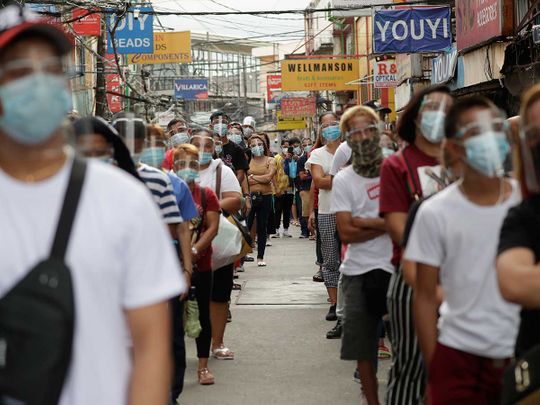
Dubai: The Philippines is today facing an unprecedented public health challenge. It has Southeast Asia's second-biggest COVID-19 outbreak at more than 563,000 infections and over 12,000 deaths, according to Johns Hopkins February 23, 2021 data. The country aims to start immunisations this month. Initially, the country is set to receive 117,000 doses of the Pfizer-BioNTech vaccine, and 5.5 million to 9.3 million doses of the AstraZeneca brand by March.
“The COVID-19 vaccination programme will be the largest and most complex public health effort in the history of the Philippines. It will especially benefit the poor and most vulnerable among us,” said Dr. Nicanor Pier Austriaco, OP, a molecular biologist and a government vaccine consultant, whose lab is also developing a yeast-based vaccine in the US.
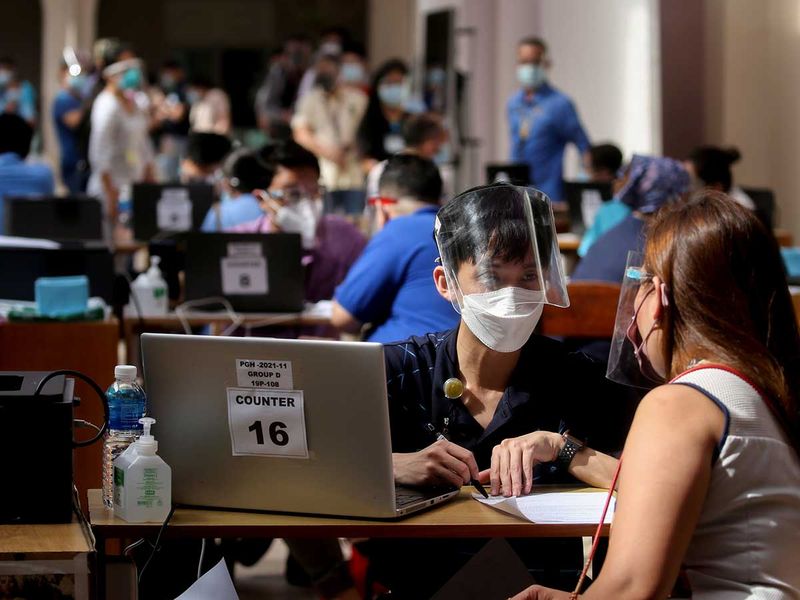
Q: Why is the Philippines' COVID-19 vaccination drive complicated?
- At least 75 million Filipinos need to be vaccinated — twice within one month.
- Due to its geography, Filipinos are scattered over thousands of islands. The country’s territory has more than 7,640 islands.
- There is widespread, even alarming, vaccine hesitancy among the population, as nearly 50% of Filipino shun vaccinations.
- A law is also being required by vaccine manufacturers (as well as by the COVAX facility), to free them from any liabilities for severe adverse effects arising from immunisation. Lawmaking in the Philippines is a notoriously snail-paced exercise.
- A small but noisy number of Filipino influencers with huge following regularly scream on Facebook "live" vlogs with unfounded claims of the supposedly ill effects of vaccines, often citing conspiracy wild theories.
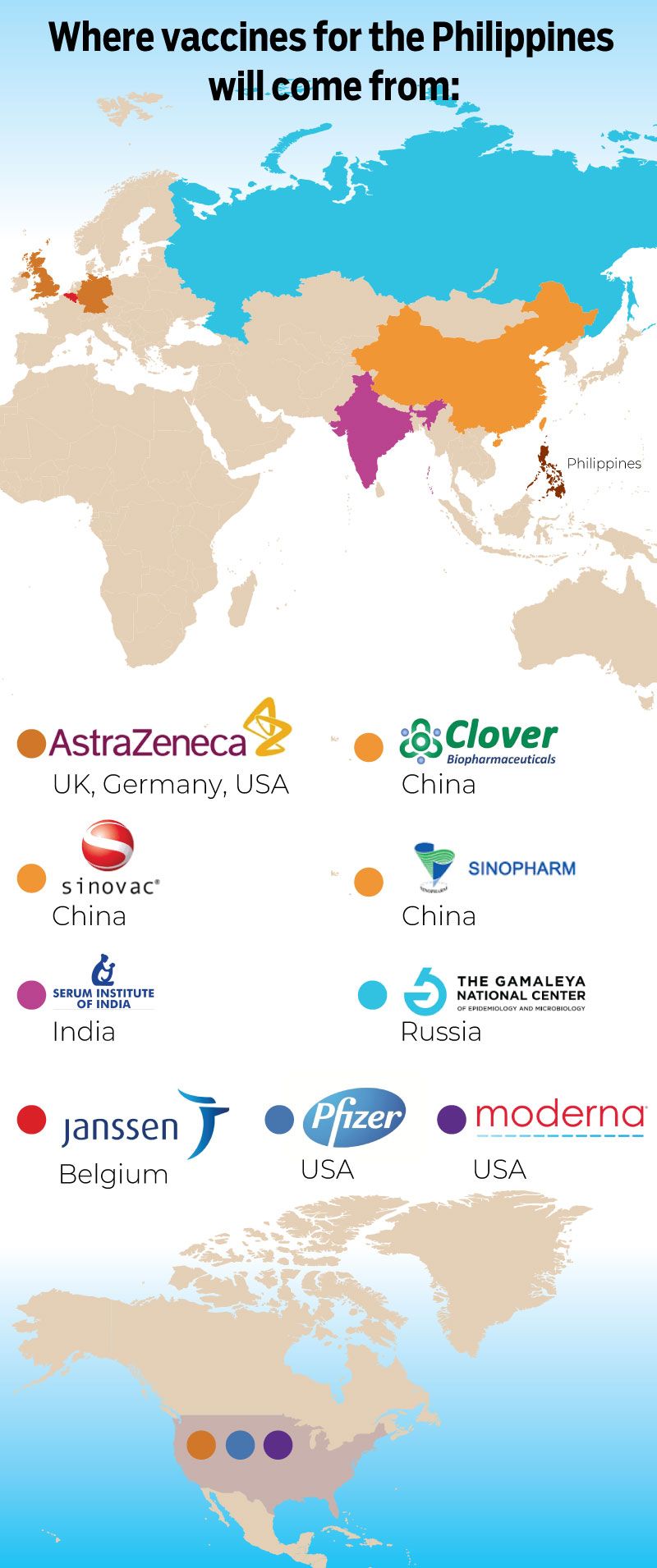
Q: What’s the level of vaccine hesitancy rate in the Philippines?
Nearly 50%. That means nearly 5 in 10 Filipinos are not sure if they will be vaccinated against COVID-19.
Q: How many health workers does the country have?
There are an estimated 1.4 million health workers in the Philippines.
Q: What is the percentage of the population being targeted for COVID-19 vaccination.
At least 60% to 70%, according to Philippine Health Secretary Francisco Duque III.
Q: Is vaccination mandatory in the Philippines?
No. Vaccination is not mandatory. But the government “highly encourages” the public to get vaccinated and be protected against preventable disease. President Rodrigo Duterte wants the nationwide vaccination campaign to start at the soonest possible time so the government can relax quarantine restrictions.
Q: What are the vaccines approved by the Philippines’ drug regulator (Food and Drug Administration)?
There are three, so far:
- Pfizer/BioNTech (US)
- AstraZeneca (UK)
- SinoVac (China)
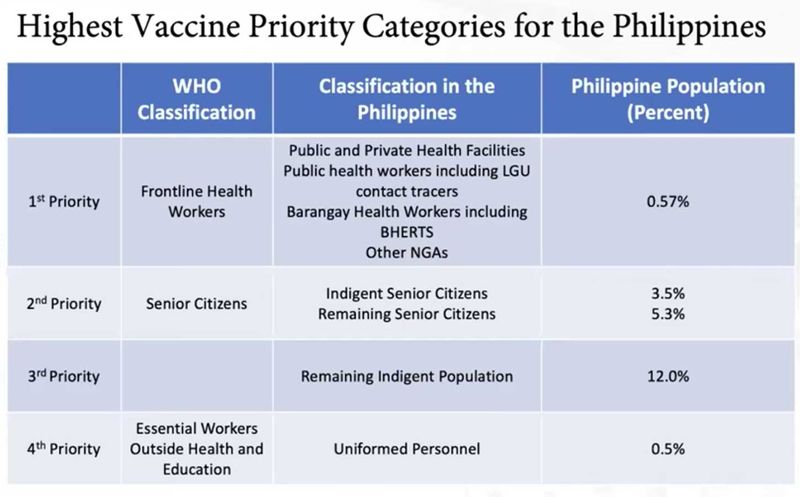
Q: Who are the vaccine makers that the Philippine government is talking negotiating with?
Secretary Carlito Galvez, vaccine czar and National Task Force Against COVID-19 chief, revealed that they have ongoing negotiations with pharmaceutical companies including (but not limited to):
- Pfizer (US/EU)
- AstraZeneca (Europe)
- Moderna (US)
- Johnson & Johnson (US)
- Sinovac (China)
- Gamaleya (Russia)
- Novavax (US)
- Serum Institue (India)
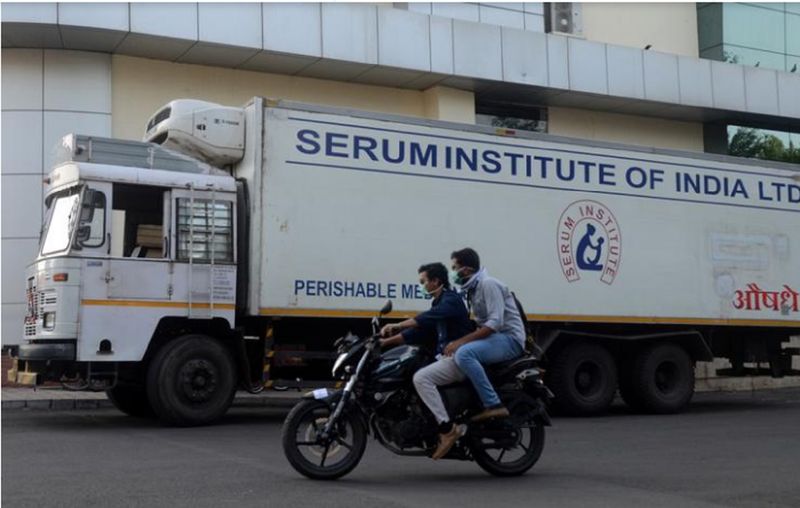
Q: How many vaccine doses are expected to arrive and when?
Before end-March 2021, at least 5.6 million doses of two COVID-19 vaccines are expected in the country, the chief of the coronavirus task force told the official Philippine News Agency (PNA) on February 2, 2021.
Q: How many vaccine doses does the country expect to have?
About 188 million doses.
Q: Will the Philippines hit its vaccine goal?
The Philippines is expecting up to 146 to 148 million doses via its direct supply negotiations with manufacturers. In addition, it expects to get 40 million from the COVAX facility [a WHO bulk-buyer initiative for developing countries].
Here’s the breakdown of what’s been announced so far:
- AstraZeneca: 2.6 million
- Pfizer: Not available
- SinoVac: 25 million
- Novavax: 30 million
- Moderna: 20 million
- Covavax (SII): 30 million
- Covax/WHO Facility: 40 million
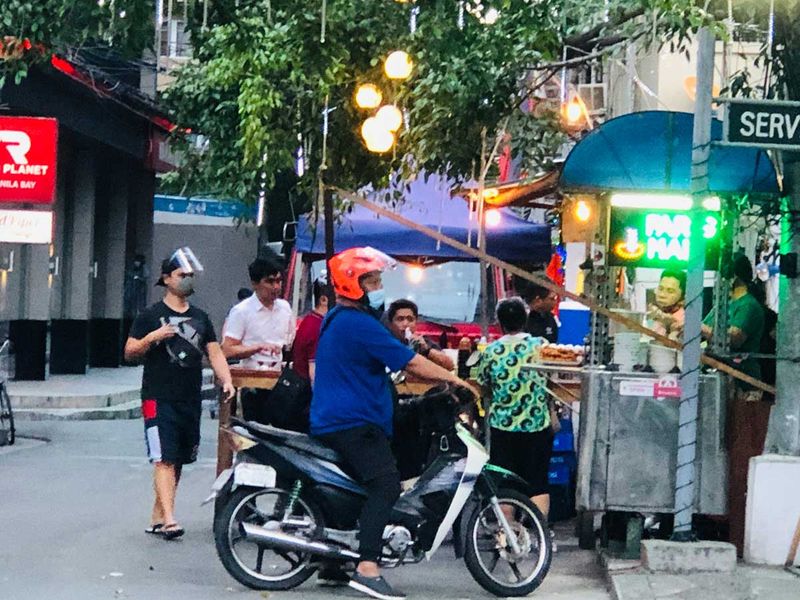
Q: How many vaccine doses did the Philippines secure so far?
About 106 to 108 million doses. Following conclusion of supply deals, the Philippines has signed the "term sheet” with five suppliers, Galvez told PNA on February 2, 2021. “We have already locked in the supply of 106 to 108 million doses, including the single dose vaccines,” said Philippines' vaccine czar Carlito Galvez.
108 million
number of vaccine doses secured by the Philippines so far, according to a senior official.108 million
Q: Have these supply agreements been finalised?
No. The government is yet to finalise supply agreements with various COVID-19 vaccine makers, according to Galvez on February 2. “All in all, by this February, second week, we’re trying to come up with the supply agreements with the vaccine manufacturers and we will also include the two remaining contracts we are negotiating,” Galvez was quoted by the official PNA as saying. "We are preparing also for a definitive supply agreement and then also the finalisation of contracts by mid of February,” he said. As of February 11, Galvez confirmed no supply agreement has yet been signed with any vaccine maker.
Q: Why were some of the vaccines ordered before approval by FDA?
It’s not clear. Secretary Galves said the doses from AstraZeneca and Novavax (yet to be approved by the Philippines’ FDA) are expected to land between April to June. "We are negotiating to have the rollout by the second quarter (of 2021), especially for Novavax and AstraZeneca,” Galvez said during a Cabinet meeting.
Q: When will the bulk of vaccine supplies come?
Galvez said they will be arriving by the third and fourth quarters of this year. "We are expecting more or less 30 to 50 million doses per quarter during the third and fourth quarter," Galvez said.
151.2 million
number of vaccines need to cover 70% of the Philippine population of 70% at the current standard double-dose protocol, administered 3 to 4 weeks apart.Q: How many vaccine doses does the country need?
The total population is estimated at 108 million, spread over 7,640 islands. The main island groups are Luzon, Visayas and Mindanao. If a minimum of 70% of the population will be targeted for vaccinations using a double-dose protocol, it would mean the country needs 151.2 million doses.
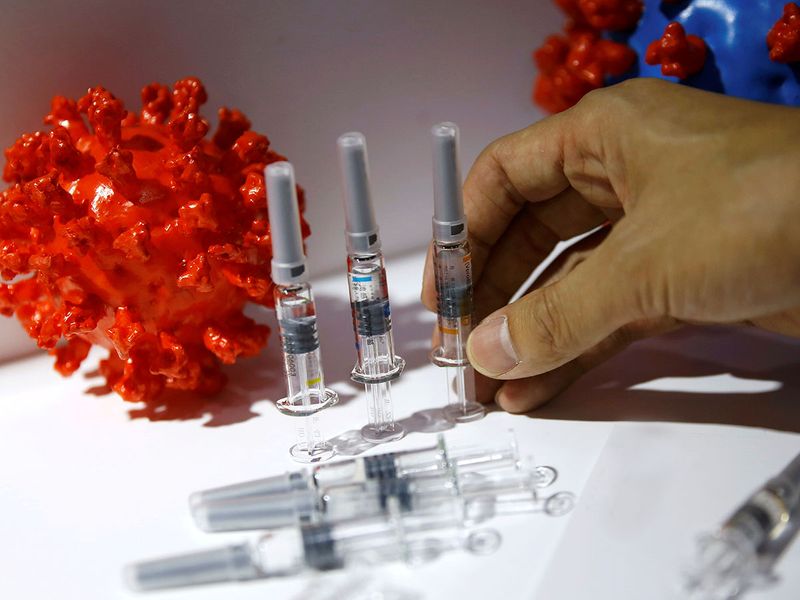
Q: What preparations are being made by national and local government?
Manila cold-storage facilities are being prepared. Health authorities recently inspected a private cold-storage facilities (Royal Cargo and Unilab) and another government-run one (at the Research Institute for Tropical Medicine) in Manila.
https://twitter.com/SecDuque/status/1351725475081584640?s=20
Local governments are also preparing for mass vaccinations. Some city government within Metro Manila have started simulated vaccine runs.
Q: Where will the vaccinations start?
Manila and major cities. Region 3 and the National Capital Region (to where Manila belongs) account for 60% of the COVID cases in the country.
Q: Will the Sinovac shots be used for frontline health workers?
On February 22, 2021, the Philippines has approved SinoVac Biotech’s COVID-19 vaccine for emergency use. The country Food and Drugs Agency (FDA) said on Monday, however, that will not give Sinovac to healthcare workers at risk of exposure due to its varying levels of efficacy.
Q: What do COVID-19 vaccines do?
Vaccines do not provide a cure for an infectious disease. Rather, they stimulate or instruct our body’s cell machinery to help trigger a natural immune response. With SARS-CoV-2, this response is achieved primarily through T-cells, B-cells and neutralising of the antibody production, which aim to prevent infection (and its associated disease, COVID-19).
If a vaccinated person later comes into contact with SARS-CoV-2, the immune system will recognise its known viral structure, combat the virus and eliminate it. Neutraliaing antibodies targeted at SARS-CoV-2 are circulating in your body all the time and will immediately bind to the virus, “neutralise” it and prevent it from entering the cell, thus protecting you from getting sick. T-cells help the immune system to fight intracellular infections and can also kill the infected cells directly.
Q: When will the Philippines achieve herd immunity from COVID-19?
It's hard to say. Some experts now say that a 70% target may not be enough, as the ideal vaccination rate should cover up to 95% of the population for herd immunity to work.








